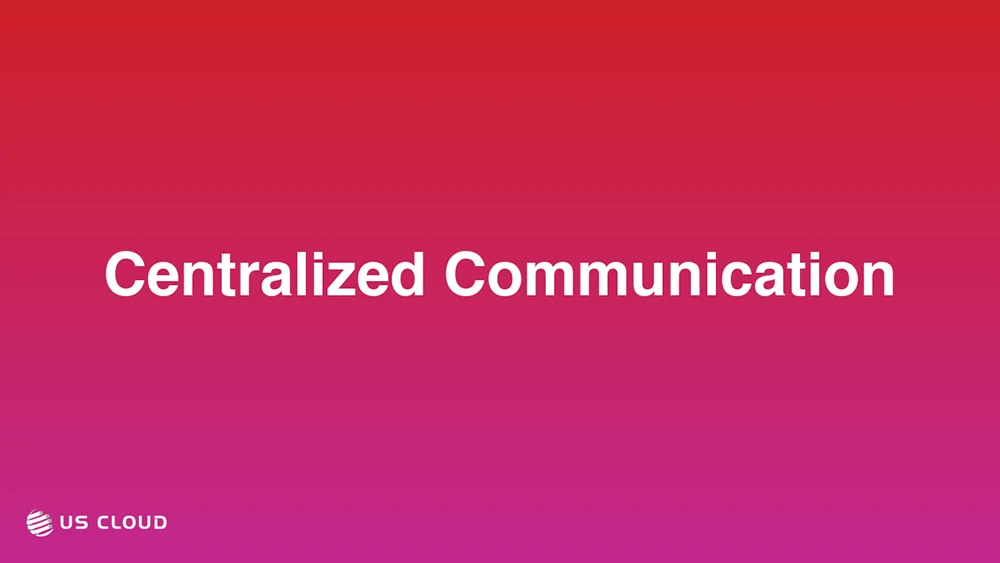Centralized Communication.

What is Centralized Communication in IT Support?
Centralized communication in IT support is a strategic approach that consolidates all IT-related interactions and communications into a single, unified platform. This method creates a central hub for managing support requests, sharing information, and collaborating across the organization. By implementing a centralized communication system, IT departments can streamline their operations, improve response times, and enhance overall service quality.
Key components of centralized communication in IT support include:
- Single Point of Contact: A designated platform for all IT-related inquiries and issues.
- Integrated Ticketing Systems: Efficient tools for tracking and managing support requests.
- Collaborative Tools: Features for knowledge sharing and team communication.
- Centralized Documentation: Resource libraries that provide easy access to important information.
Benefits of Centralized Communication
Implementing a centralized communication system in IT support offers numerous advantages for both the support team and end-users. By consolidating all communication channels, organizations can significantly improve their support processes and overall efficiency.
One of the primary benefits is improved ticket tracking and management. With all requests funneled through a single platform, IT teams can easily prioritize, assign, and monitor the progress of support tickets. This streamlined approach reduces the risk of lost or duplicate requests, ensuring that all issues are addressed promptly and efficiently.
Another significant advantage is enhanced knowledge sharing and collaboration. Centralized communication platforms often include features such as shared knowledge bases, discussion forums, and team chat functionality. These tools enable IT support staff to:
- Quickly access and share relevant information.
- Collaborate on complex issues.
- Learn from each other’s experiences and expertise.
Implementing Centralized Communication
Successfully implementing a centralized communication system requires careful planning and execution. Organizations must consider various factors to ensure a smooth transition and maximize the benefits of this approach.
The first step is selecting the right platform or tool that aligns with the organization’s specific needs and requirements. Popular options include dedicated service desk software, collaboration platforms like Microsoft Teams, or integrated IT management suites. When choosing a solution, consider factors such as:
- Scalability: The ability to accommodate future growth.
- Integration Capabilities: Compatibility with existing IT management tools.
- User-Friendliness: Ease of use for both support staff and end-users.
- Customization Options: Flexibility to match organizational workflows.
Once a suitable platform is selected, the next crucial step is to develop clear communication policies and procedures. These guidelines should outline how different types of requests should be submitted, prioritized, and escalated within the centralized system. Training both IT staff and end-users on the new processes is essential for ensuring widespread adoption and maximizing the benefits of the centralized approach.
Overcoming Challenges
While centralized communication offers numerous benefits, organizations may face some challenges during implementation and adoption. Addressing these potential hurdles proactively can help ensure a successful transition to a centralized support model.
One common challenge is resistance to change from both IT staff and end-users. Some individuals may be accustomed to using specific communication channels or may be hesitant to learn a new system. To overcome this resistance:
- Clearly communicate the benefits of the new system to all stakeholders.
- Provide comprehensive training and support during the transition period.
- Gather feedback and address concerns promptly.
Another potential challenge is maintaining a personal touch in support interactions. While centralized systems can improve efficiency, they may sometimes feel impersonal to end-users. To mitigate this issue:
- Encourage support staff to use a friendly and personalized tone in their communications.
- Implement features such as video chat for more complex issues that require face-to-face interaction.
- Regularly solicit feedback from users to ensure their needs are being met.
Conclusion
Centralized communication in IT support offers a powerful solution for organizations looking to streamline their support processes, improve efficiency, and enhance user satisfaction. By consolidating all IT-related interactions into a single platform, organizations can benefit from improved ticket tracking, enhanced knowledge sharing, and more efficient resource allocation.
While implementing a centralized communication system may present some challenges, the long-term benefits far outweigh the initial hurdles. With careful planning, proper training, and ongoing optimization, organizations can create a more responsive, efficient, and user-friendly IT support environment.
As technology continues to evolve and play an increasingly critical role in business operations, the importance of effective IT support will only grow. Embracing centralized communication is a key step towards building a robust, scalable, and user-centric IT support function that can meet the demands of today’s fast-paced business landscape.
